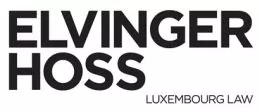This article is the second of a series of publications, which focuses on specific 5G topics.
In our previous publication we presented an overview of the 5G technology and the related opportunities in our society. This publication focuses on the concrete deployment of 5G in Luxembourg and more particularly the allocation of a dedicated part of the electromagnetic spectrum.
5G: How does it work?
5G technology requires the use of the existing radio spectrum to transmit and receive signals through adequate infrastructure and end-users' equipment. However, the spectrum is a finite resource and its management has been entrusted to the State by the Law of 30 May 2005 on the management of radio waves (as amended). Accordingly, the use of radio waves whether for broadcasting or receiving signals is subject to licence in accordance with a frequency plan and a frequency register maintained by the Institut Luxembourgeois de Régulation ( "ILR").
Which frequency bands will be dedicated to 5G?
To deploy 5G, the European Union's Radio Spectrum Policy Group1 identified three different frequency ranges: (i) the band of 700MHz (470-790 MHz), (ii) the band of 3.6 GHz (3400-3800 MHz) and (iii) the band of 26 GHz (24.25-27.5 GHz). In Luxembourg, the ILR conducted two public consultations between May and July 2019 on the allocation of parts of the 700MHz and 3.6 GHz bands. As a result, the Minister of Communications and Medias decided to allocate the bands of 703-733/758-788 MHz and the band of 3420-3750 MHz to the deployment of 5G. On 28 October 2020, the ILR launched a public consultation on the 26 GHz band (26.5 GHz to 27.5 GHz) to assess the interests and needs of potential candidates for its future use.2 Depending on the results of that public consultation, selected parts of the 26 GHz band might also be allocated to the candidates concerned. However, it is assumed that no massive exploitation of the 26 GHz band will happen before 2025.
How are frequency bands allocated to candidates?
The frequency bands available have been allocated further to an auction organised by the ILR between 13 and 17 July 2020 with all the interested candidates.3 As a result, all the frequencies available have been allocated to four telecom operators in July 2020 (against five candidates): Post Luxembourg, Proximus Luxembourg SA, Orange Communications Luxembourg SA and Luxembourg online SA.4 They have been granted a licence to use the frequencies allocated to them.
What is covered/imposed by the 5G licence?
The licences are valid for an initial period of 15 years and renewable (at least once) for a further period of five years. The auction also provided for conditions and obligations to be met by the licence holders for using the allocated frequencies, in particular: (i) to comply with the agreements between the countries concerned (i.e. Luxembourg, Belgium, France, Holland and Switzerland ) on cross-border coordination for the use of the radio spectrum, (ii) to comply with technical conditions as determined by the European Commission for the harmonisation of the frequency bands5, (iii) to synchronise the networks between the different operators to avoid any interference, (iv) to protect other services using the radio spectrum (e.g. fixed-satellite service), (v) to deploy the technology and cover the territory of Luxembourg in accordance with a determined calendar and, (v) specific conditions to share the allocated frequency bands and for the transfer of related licences.
What's next?
According to the Luxembourg government calendar for the deployment of 5G, each licence holder shall equip a minimum of 10 sites with an active base station to connect all its final clients in the city of Luxembourg at the latest on 31 December 2020. On 30 June 2021, a minimum 20 sites will be required at national level, 40 sites on 31 December 2022 with a national coverage of 50% and 80 sites on 31 December 2024 with a national coverage of 90%. It is expected that all licence holders will make 5G available to their customers by the end of 2020. Meanwhile certain operators have already proposed concrete offers including the use of 5G.
Footnotes
1. The Radio Spectrum Policy Group is an advisory group composed of representatives of the Member States and of the Commission assisting the Commission in the development of radio spectrum policy, in particular to coordinate the approach to radio spectrum management in the European Union.
2. The public consultation is open until 8 December 2020.
3. Ministerial Decision of 27 April 2020 on the procedure of competitive selection by auctioning for the allocation of the 700MHz and 3600MHz frequency bands (as amended).
4. For the details, see: https://smc.gouvernement.lu/fr/actualites/articles/2020/Detail5G.html
5. Commission Implementing Decision (EU) 2016/687 of 28 April 2016 on the harmonisation of the 694-790 MHz frequency band for terrestrial systems capable of providing wireless broadband electronic communications services and for flexible national use in the Union; Commission Implementing Decision (EU) 2019/235 of 24 January 2019 on amending Decision 2008/411/EC as regards an update of relevant technical conditions applicable to the 3400-3800 MHz frequency band.
The content of this article is intended to provide a general guide to the subject matter. Specialist advice should be sought about your specific circumstances.

